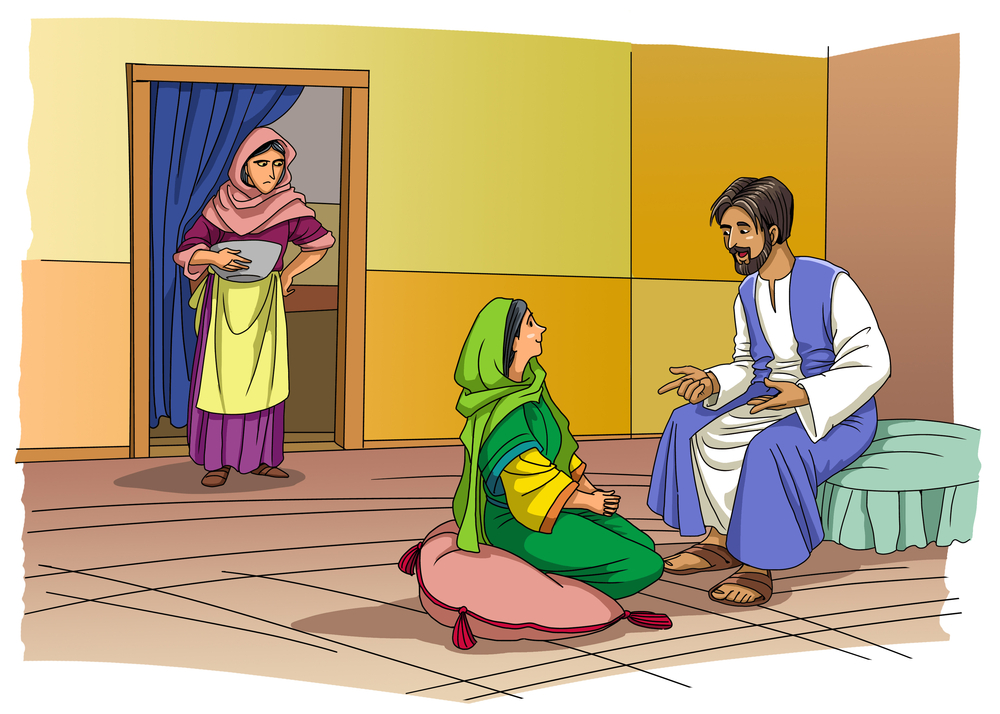Abraham and Sarah had been waiting forever to have a baby. When Abraham welcomed the “three men,” he didn’t realize that they were angels—but they were! By offering these travelers common hospitality, he and Sarah were given the good news that by that time next year, Sarah would have a son.
In the Gospel, Jesus went to visit with his friends, Martha and Mary. They were Lazarus’ sisters. At a time when nobody bothered to teach girls anything, Jesus was willing to teach Martha and Mary everything. But Martha took her responsibility to provide hospitality very seriously and wouldn’t sit still. She was ignoring her company and her opportunity to know God on a level that very few people in history ever would. Jesus’ invitation for Martha to “choose the better part” as Mary did redefines the meaning of hospitality—and especially what it means to welcome Christ’s presence.
You can read this Sunday’s readings here:
Scriptures for the Sixteenth Sunday in Ordinary Time, Cycle C
Break open the word with your family
Kids
Do you think it’s unfair when you have to do work and other people don’t? Does it ever happen that other people have to do work and you don’t?
Teens
Do you ever begrudge other people when something good happens to them? If you ever catch yourself doing that, think about what choices they made to get where they are. What choices could you make that would improve your happiness?
Adults
Are you more like Mary or Martha? Do you miss out on opportunities to enjoy life because you are too busy? What “business” keeps you from enjoying the people around you?
A little lectio
The ancient practice of prayerfully reflecting on bits of Scripture is known as lectio divina. Want to try it out with your family? Head over to Lectio Divina for Kids to find out how to adapt this prayer practice for your kids.
A little Bible study
Want to do a little Bible study with your kids? Here are some tips:
- During Ordinary Time, the Church pairs the Old Testament and New Testament readings in a way that each sheds light on the other. Ask your kids to look for the common theme connecting the two readings. (Sometimes it’s obvious, sometimes it is subtle.) How does the “dialogue” between the readings help you understand them better?
- Get a New American Bible, Revised Edition, and take a look at the footnotes for these readings. How do they change your understanding of what is going on?
- Take a look at the context for the readings—what happens before, or after?
- Read the NABRE’s introduction to the book of the Bible that the readings are taken from. How does that help you understand the readings?
- If you don’t have a copy of the NABRE at home, you can view it online at the USCCB website at the Daily Readings web page.
For even more resources for breaking open this Sunday’s readings, head over to The Sunday Website.



